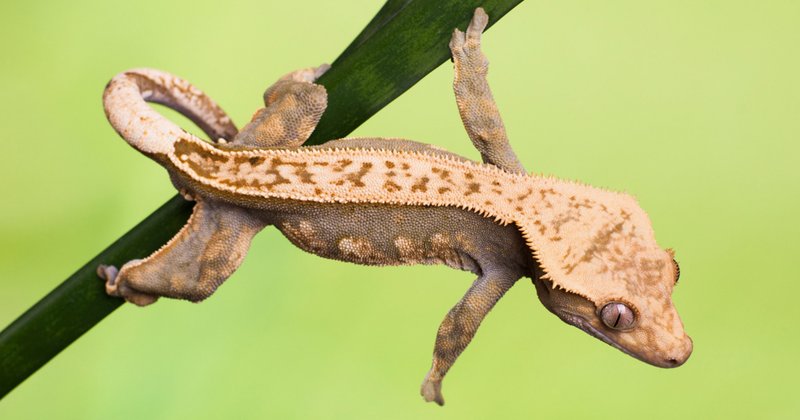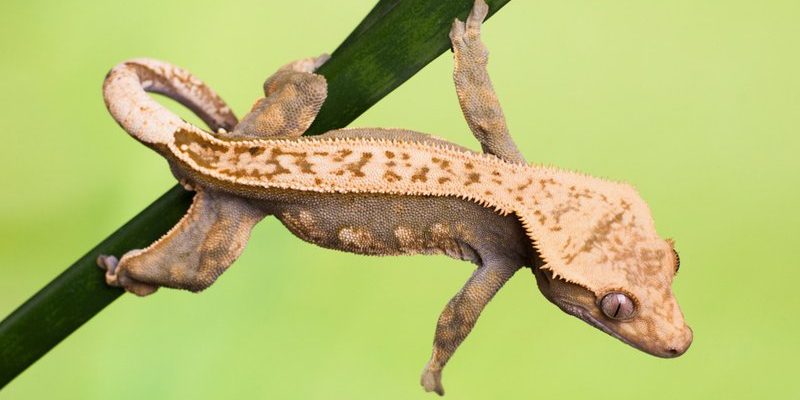
The crested gecko, with its striking appearance and quirky personality, is more than just a pretty face. These geckos thrive in the lush, humid forests of New Caledonia, where they navigate the trees with ease. They’re not just hanging out; instead, they play a crucial role in their environment. Let’s dive into what makes these little guys so important in their natural habitat and why understanding their role can deepen our appreciation for the animal kingdom.
What Makes the Crested Gecko Unique?
Before we get into the details of their habitat role, it’s helpful to know what makes the crested gecko special. Firstly, they are known for their unique crest running from the eyes down to the tail. This crest isn’t just for show; it helps them blend into their environment, making it harder for predators to spot them. Consider it their version of camouflage!
Moreover, crested geckos are primarily nocturnal, which means they come alive at night. During the day, they rest on tree branches, blending in with the leaves and bark. This behavior not only protects them from predators but also helps them conserve energy. So, they’re quite clever little creatures, using their natural traits to survive and thrive.
Lastly, their ability to shed their tails when threatened is a notable defense mechanism. Think of it as a way to distract predators while they make their escape. This fascinating aspect of their biology showcases their adaptability and resilience in the wild.
The Crested Gecko’s Role in the Ecosystem
You might wonder, what exactly do crested geckos do in their natural habitat? Well, they contribute significantly to their ecosystem in several ways. Firstly, they are a part of the food web. As both predators and prey, they help maintain the balance of life. They primarily feed on insects and fruit, which means they control insect populations while also providing food for larger predators, such as birds and snakes.
Through their herbivorous diet, crested geckos also play a role in seed dispersal. When they eat fruit, they often consume seeds that then pass through their digestive system. When they move around, these seeds can be deposited in new locations, aiding in plant reproduction. This process is vital for maintaining healthy vegetation in their habitat.
So, when we think about crested geckos, it’s not just about their charming looks. They are little ecological heroes, helping ecosystems function smoothly and promoting biodiversity.
Habitat Preferences of the Crested Gecko
Crested geckos are generally found in a variety of habitats within New Caledonia. They prefer rainforests, which provide the humidity and shelter they need. In these dense forests, they are often found climbing trees, where they feel safest. The high canopy not only offers protection from ground predators but also gives them access to their favorite food sources.
During heavy rainfall, they’ll often hide under leaves or in tree hollows. This ability to find shelter helps them stay safe and dry. The climate of New Caledonia is ideal for these geckos, with temperatures usually ranging from 70°F to 80°F. It’s like they’ve found their perfect cozy spot!
Interestingly, crested geckos can also adapt to some level of habitat modification. They can survive in disturbed areas like plantations or gardens as long as there are sufficient trees or shrubs. This resilience highlights their adaptability, which is crucial in a world where habitats can change quickly due to human activity.
Impact of Habitat Loss on Crested Geckos
While crested geckos are adaptable, they’re not invincible. Habitat loss is a significant threat to their populations. Deforestation for agriculture and urban development has led to a decline in suitable living spaces for these geckos. Imagine losing your favorite park or hangout spot; that’s what these geckos are facing.
As their natural habitats shrink, they may face increased competition for resources. More geckos in a smaller area can lead to stress and a decline in overall health. Plus, when their habitat is destroyed, the delicate balance of their ecosystem shifts, which can have ripple effects on other species.
Conservation efforts are crucial in protecting not just the crested geckos but their entire ecosystem. Preserving their forests means safeguarding their future and that of many other species that call those forests home.
Conservation Efforts and Their Importance
In response to habitat loss, various conservation initiatives are underway in New Caledonia. Local organizations are working hard to protect and restore habitats to benefit crested geckos and other wildlife. These efforts range from reforestation projects to creating protected areas where these geckos can thrive without human interference.
Public awareness campaigns are also important. By educating people about the role and needs of the crested gecko, locals can help protect their habitats. Here’s the thing: when communities understand the value of their local wildlife, they are more likely to take action to protect it.
Some conservationists also advocate for sustainable practices in agriculture. This approach allows farmers to cultivate their land without destroying vital habitats. By finding a balance between human needs and wildlife protection, we can create a healthier environment for everyone, including our scaly friends.
The Future of Crested Geckos in Their Natural Habitat
The future for crested geckos depends on our actions today. By supporting conservation efforts and spreading awareness, we can help secure a brighter future for these unique reptiles. They may seem small, but their impact on the ecosystem is substantial, and every little effort counts.
As we learn more about the crested gecko, we begin to appreciate their role beyond their charming looks. They remind us of the interconnectedness of all life and the importance of maintaining balance in our ecosystems. With the right care and attention, crested geckos can continue to play their essential roles in the lush rainforests of New Caledonia for generations to come.
In conclusion, the crested gecko is more than just a beautiful creature; it’s a vital component of its natural habitat. From their unique adaptations to their role in the ecosystem, these little reptiles exemplify nature’s intricate balance. By understanding and protecting them, we can ensure that they thrive in the wild, continuing to enchant us with their charm and resilience.

